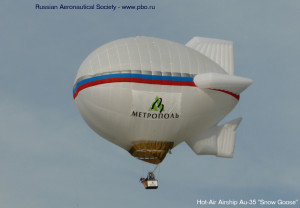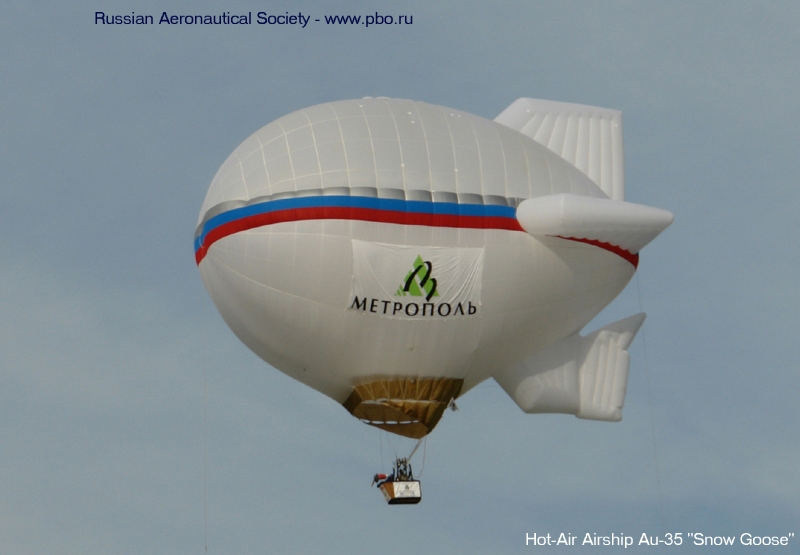Call them what you will, zeppelins, blimps, airships, but this old technology is reappearing in Russia. During the Soviet Union, the idea of using airships was considered, and almost implemented, with a state-run design office set up in the Siberian city of Omsk. Funding was set aside to create a test model, but before the project came to fruition, it was disbanded.
Russian scientists have offered four reasons why the project was initially abandoned: low speeds, a textile shell, flammability and wind sensitivity, all of which are now being claimed to have been addressed. The once antiquated design has been updated, making it a brand new vehicle. With this new design, scientists claim they will be able to make the trip from Kaliningrad to the Kuril Islands at various altitudes at speeds up to 280 miles per hour, in all weather conditions year round.

Vyachslav Shalaev, the director of the Siberian State Automotive-Road Academy Innovation Centre, said in 2013, that were this project to receive funding, it would have an unprecedented impact on the development of the Russian regions. The construction of the necessary infrastructure for road, rail and airplanes would be unnecessary with this new airship, allowing cheaper, quicker development of the remote areas of the country.
In August 2013, Augur RosAeroSystems’ AU-30 Multifunctional Airship took off from Russia’s only dirgibledrome in Vladimir region to take part in Russia’s largest airshow, MAKS, as one of several airships shown at the event. While this particular airship only has a maximum payload of half a ton, limiting its usefulness, Augur has many other ships that have more practical applications. These other models can be used for early warning missile detection and surveillance along borders. Augur’s more practical ships include the Tiger, the Puma, the Gepard, and the Lynx.
This year, the unmanned airship, the DP-29, manufactured by the Dolgoprudny Design Bureau of Automatics, passed its factory tests, which place in Kirzhach in the Vladimir Region. Since the completion of these tests, the DP-29 is being updated and the necessary changes are being made. This airship, capable of reaching 3,300 feet and carrying up to 10 kg of equipment, can be in the air for up to three hours. The company hopes to have this model ready by 2016.
The Russian Ministry of Defence has expressed a great deal of interest in some of these projects, particularly the DP-29, saying that some models are well suited for aerial surveillance. While military application may come in the next several years, a lack of regulations for unmanned airships may pose legal issues in the advent of civilian usage.

The Russian border patrol has been considering AU-30 airships painted black to patrol the border with Kazakhstan. However, buoyancy has proven to be an issue. They would ideally like to use the airship in conjunction with an infrared camera to quietly approach drug traffickers from above, but the buoyancy change involved in deploying the men on board make it unviable with current technology.
The mining industry has also shown some interest in the use of airships to reach remote parts of Siberia. Some mining companies like Petropavlovsk PLC have invested in the development of these airships, as, if the technology proves effective, it greatly reduces the cost of transporting the necessary equipment and the product to and from remote locations. Russia’s largest gold producer, Polyus Gold International Ltd, was at one point considering airships to deliver heavy equipment to its Natalka project in the Russian Far East. However, they decided to abandon the idea, as the market did not offer a suitable product at the time.
While perhaps a rather romantic idea, if the technology is perfected, the use of airships could provide both the Russian military and private sector with a cheap, environmentally friendly option to operate in the remote regions of Russia. With changes in technology, perhaps there will be a resurgence in airships, not just in Russia, but worldwide.




